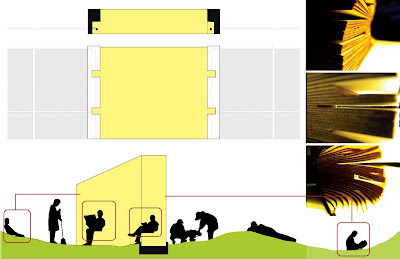The border between two nations is manifested not just as a line of control, but a condition. It symbolizes a joint between the two nations rather than a divide; multi-cultural, diverse, and fragmented. This joint can be seen through everyday activities that initiates a dialogue between the two nations. Forming what may seem to be a third space/ third nation. (LEFT: image of the Israeli-Palestinian wall)
The wall/ fence sites itself in the center of this third space. It is here that these everyday activities, seek their way through ‘holes’ in these walls. Some created, others existing. Some illegitimate, others legitimate. The fence is probed and worked upon by various actors as an attempt to maintain this joint. This gives rise to local tactics that are imagined as global threats. As the walls grow taller, stronger, and more intense; nations divide, cities get fragmented and homes are rearranged. The reconfiguration and resettlement of the existing, in order to insert an alien screen/barrier, become a part of the hybrid. A new landscape is seen to emerge as a result of these new configurations.
The border fence reinstates ones notion of security (against the aliens), barricades illegalities (of exchange not allowed in the country) and controls immigration pressures. At the fence it is seen as a workspace for an illegal immigrant excavating his/her way through the night; as the meeting place for several families separated along this divide; as a space for trade for a drug peddler; as a screen to climb on, or a screen to play across…
The new landscape
Site:

 Base map after the operatives were applied.
Base map after the operatives were applied. Proposed landscape
Proposed landscapeThis part of the project was developed as a 3-Dimensional, conceptual map that was built on a set of Boolean operations applied to the conceived space of the border. The stretch across the check points Paso Del Norte Port of Entry to the
Holes in the Wall
The U.S. Mexico border fence spans across the landscape, a high eighteen foot tall wall that is built on the
Programming Exchanges along the border
Public participatory programs are inserted as plug-ins within an existing border condition as an attempt to instigate a dialogue or an ‘exchange’ of sorts that questions notions of exclusion/ inclusion.
“In the last few decades, the proliferation of fortified enclaves has created a new model of spatial segregation and transformed the quality of public life in many cities around the world. Fortified enclaves are privatized, enclosed and monitored spaces for residence, consumption, leisure and work. The fear of violence is one of their main justifications. They appeal to those who are abandoning the traditional public sphere of the streets to the poor, “the marginal,” and the homeless. In cities fragmented by fortified enclaves, it is difficult to maintain the principles of openness and free circulation that have been among the most significant organizing values of modern cities. As a consequence, the character of public space and of citizens’ participation in public life changes.” Teresa Caldera- Fortified enclaves- the new urban segregation
Everyday activities of local interactions are manifested as spaces for public interactions. The border wall thickens to allow for ones body to engage in a dialogue with the other. All forms of communication and exchange are experienced through the perforations or narrow crevices of a fence. These openings being designed to allow for a particular kind of exchange, legitimize its existence.
Exchange of information
 Library............................. Newspaper stand
Library............................. Newspaper stand
Exchange of values

The Confession room......................................The Church
Other exchange nodes

Scenario 1
A public landscape is proposed to span across the border bridging the two countries. The existing fence is maneuvered across the park along the new landscape that suggests a possible notch of two landforms. The fence is interrupted by proposed plug-ins that attempt to instigate a dialogue on the new border condition.
Through this scenario a post border projection is drawn where the border plug-ins are retained as monuments that mark a certain period in history.
 ...schematic diagram indicating the extent of the proposed landscape
...schematic diagram indicating the extent of the proposed landscape
Scenario 2
The wall plug-ins are imagined as a system of repetitive elements that can replace a volume of
These elements are programmed to perform a certain form of exchange that formally brings together people of diverse origin in order to engage in a dialogue on the border.
Through this scenario the border plug-ins are envisioned as nodes that perform as social spaces that become integral for the strengthening and building of a healthy society.
Concluding notes
The cities along the border, seem to be in an extremely unstable condition. The baggage of a socio-political threat along the periphery is killing everyday life in these urban and rural settlements.The two projected scenarios, propose the injection of civic/ public infrastructure as spaces for conversation, into this barren landscape of exclusion. These nodes of exchange are conceived as social spaces that can strengthen local ties, creating an archive of experiences and building healthier societies.






No comments:
Post a Comment